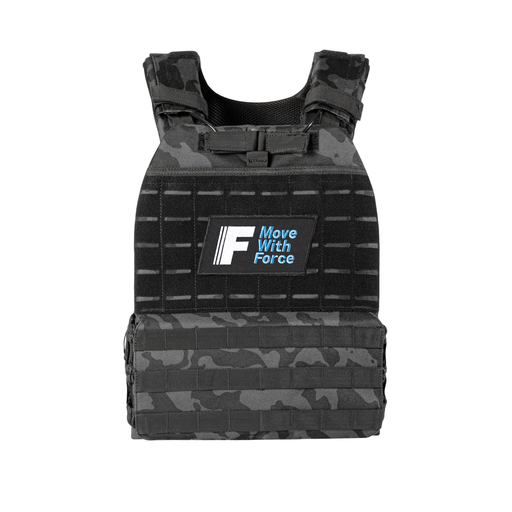
Hydration vests - latest running fad or performance necessity?
You’ve probably seen growing numbers of fellow runners out on runs or at local races wearing hydration vests. But are they just another running trend, or do they offer real benefits? Here’s how to decide whether you need a hydration vest for running.
Why are hydration vests so popular for running?
Hydration vests aren’t a new invention. Originally designed for trail runners and ultra-marathoners (sometimes even used by mountain bikers), the modern style of sleek hydration vest has made its way into mainstream running.
If you’ve never seen one, imagine a short, light, wrap-around backpack that fits close to the body. They have built-in water reservoirs or bladders with a tube that you can bring around to your mouth. The Force hydration vests can hold two water bottles as well.
But do those of us who aren’t doing ultras or heading out for long trail runs need a hydration vest?
Do you have to hydrate during running?
Before we tackle the vest question, let's discuss why hydration matters. When you sweat, you lose water and electrolytes (mostly sodium and chloride, but also magnesium and calcium in smaller amounts). This fluid loss can easily lead to dehydration. And even 2% dehydration during exercise can negatively impact your running performance. Dehydration can also lead to tiredness, brain fog and muscle cramps. It can increase perceived rate of exertion (things feel more difficult) and your risk of heat-related illnesses.
5 factors that influence hydration for running
- Duration: you should hydrate for runs lasting over 60 minutes (but the other factors in this list might affect that)
- Intensity: higher effort runs means you’ll sweat more than in slower, easier runs
- Temperature: hot weather, direct sunlight, or being overdressed can lead to excess sweating
- Humidity: when the air is humid, sweat doesn’t evaporate from your skin as effectively so you need to hydrate more
5: The runner: some people naturally sweat more, and some people simply like to drink during runs even if they don’t strictly need to
Electrolytes vs. water for runners
One of the good things about having a hydration vest with a water pouch and separate bottles is the option to carry both water and separate electrolytes drinks. But do you need electrolytes during your run, or is plain water enough?
Most of us get enough electrolytes from the foods we eat, and don’t need to stress about replacing electrolytes. But when your runs hit 60+ minutes – or if the weather is hot or humid – it might be a good idea to drink electrolytes as well.
According to the American College of Sports Medicine, we lose on average 800mg of sodium, 195mg of potassium, 20mg of calcium and 10mg of magnesium per hour of sweaty exercise. You don’t need to replace this exact amount, but it’s a good idea to replace around half of this on 60+ minute runs.
When to hydrate during running training
Before: drink 500-750ml water or electrolytes 2 hours before your run.
During: for 60+ minute runs, aim to drink about 75ml every 15-20 minutes.
After: replenish lost fluids post-run, drinking at least 500ml within 20 minutes and then drinking normally for the rest of the day.
What is the science of hydration for running
Did you know that it takes at least 25 minutes for fluids to be fully absorbed by your body? That’s why what you drink before your run is crucial, especially for anything less than a 5k.
Learn your body’s signs of dehydration, which include thirst, a dry mouth, and needing to wee less. You might even feel dizzy, foggy headed, or have a rapid heartbeat.
Why use a hydration vest for running
Hopefully by now you realise that there’s no need to take water on board during a standard 5k. But if you go on longer runs – or just want the option of sipping water as you wait for your Parkrun to get going – here’s why hydration vests beat hand held water bottles.
- Convenience: easy access to water without needing to stop
- Capacity: vests can carry more water than handheld bottles
- Comfort: vests do away with the need to do the lopsided bottle carry
- Hands-free: using a vest allows for natural arm swing and better running form
- Storage: a good hydration vest will include pockets for keys, phone, etc
Should you get a running hydration vest?
A hydration vest might be a good investment if you run for 60+ minutes, if you often run in hot/humid conditions, if you’re a particularly sweaty person, or if you simply like the idea of having access to water at all times.
Ultimately, there’s nothing bad about being hydrated. And if a hydration vest makes you feel healthier and more prepared, then go for it!
Check out the Force Fitness hydration vests – they’re lightweight, form-fitting, and have space for two water bottles as well as the hydration bladder.

















